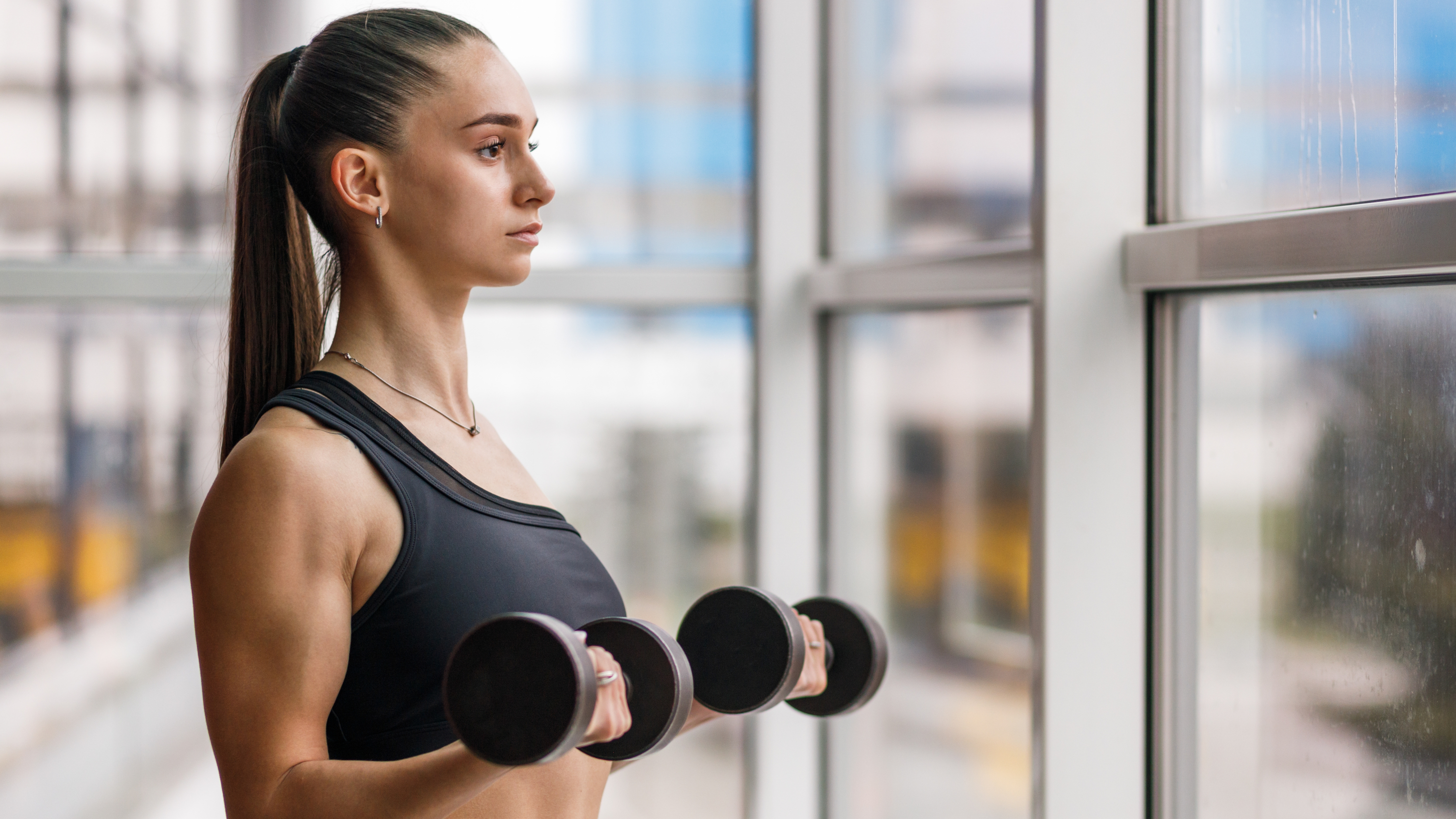
Forget pull-ups, rows, or heavy weights because this three-move arm workout hits your biceps and engages your pecs and abs using two sets of medium to heavy dumbbells and a resistance band — if you have one.
But before you take a look at that equipment list and give it a firm no, you can also just use one set of medium weights or the best adjustable dumbbells, so there’s really no excuse not to try this out.
We know that you'll adopt most arm workouts to sculpt strong shoulders and push those pecs to the limit as well. But hear us out, because this biceps workout has been tried and tested by us, so we know it's worth your while if you want to build your biceps without spending hours in the gym.
What is the 3-move dumbbell arm workout?
Specifically designed with the biceps muscles in mind, the three dumbbell exercises will work on isometric contractions (from a non-moving position), plus develop your pulling power using isotonic movement (we cover the differences between isometric versus isotonic muscle contraction here).
The workout should take no longer than 15 minutes and comes courtesy of Paul Sklar, who credits this as a “triple threat biceps blast three-move power workout.” He’s not wrong. We’re still struggling to wash our hair over here.
“If you’re looking for an intense biceps workout that maximizes your time, give this three-move biceps workout a go,” he says. You just need one or two sets of dumbbells and a band. No band or multiple sets of weights nearby? Use one set, but be sure you can lift and control the dumbbells with proper form and without swinging for all three moves — tailor the weights to the weakest exercise and increase the reps if needed.
In this case, we’re training toward muscle growth (known as hypertrophy) rather than maximal strength, so you can work at a submaximal weight range. If you don’t perform arm workouts often or are unsure which weight to select, the last few reps should feel punishing and close to failure.
The workout:
Execute this as a giant set, performing the three exercises back to back before you rest. You might want to go lighter for the second set. Maximizing contraction doesn’t mean lifting at your heaviest, so remember it’s about controlling both phases of each movement — eccentric (in this case, lowering the weight) and concentric (lifting the weight against resistance).
Dumbbell hammer curl
Sklar’s variation on the hammer curl has you shifting onto the balls of your feet and slightly taking your weight forward to “shift weight into the biceps.” Bring your dumbbells to the front of your thighs and contract your whole upper body, including your stomach and pecs.
Bend your elbows and curl the weights toward your shoulders, keeping the elbows tucked and avoiding momentum to drive the weights. This move will hit your biceps and upper forearms hard. You can alternate the weights if you prefer.
8-12 reps or to failure.
Dumbbell squeeze curl
Grab your next set of weights and move straight into the dumbbell squeeze exercise. Hold the dumbbells together with the ends touching and palms facing upward. Your pecs, biceps and abs should stay under contraction. Keep the dumbbells locked together, then perform a biceps curl, controlling the lift and lowering phases.
6-10 reps.
Iso band curl
Step on your band with both feet and stand with your feet hip-width apart. Use a challenging resistance, preferably a band with handles, and adopt an underhand grip as if performing a standard biceps curl. We recommend checking out the best resistance bands if you’re looking for a set.
Squeeze your stomach and pecs, pull your shoulder blades back and down and stand tall while bracing your upper body. Bend your elbows and curl the band halfway with your elbows locked close to your body and arms at 90 degrees. Hold this position, then practice extending one arm at a time, curling it back to position, then switching sides.
“There’s more peak involved in this particular exercise,” Sklar explains. Your biceps hold under tension for the entire time.
Perform reps to failure, rest 5-6 seconds, then perform a further 3 full-range biceps curls for 3 more reps.
Verdict
You can do this as a standalone arm workout or as a finisher. Sklar even uses this workout as a warm-up, but if you’re about to hit heavy weights and big lifts, we’d consider reserving this until last.
“Contraction is key,” Sklar adds, which helps increase your mind-muscle connection, squeezing more activation out of each move and improving results. But remember, for your muscles to show, you’ll need to consider the combination of diet and exercise and that all-important body fat percentage.







